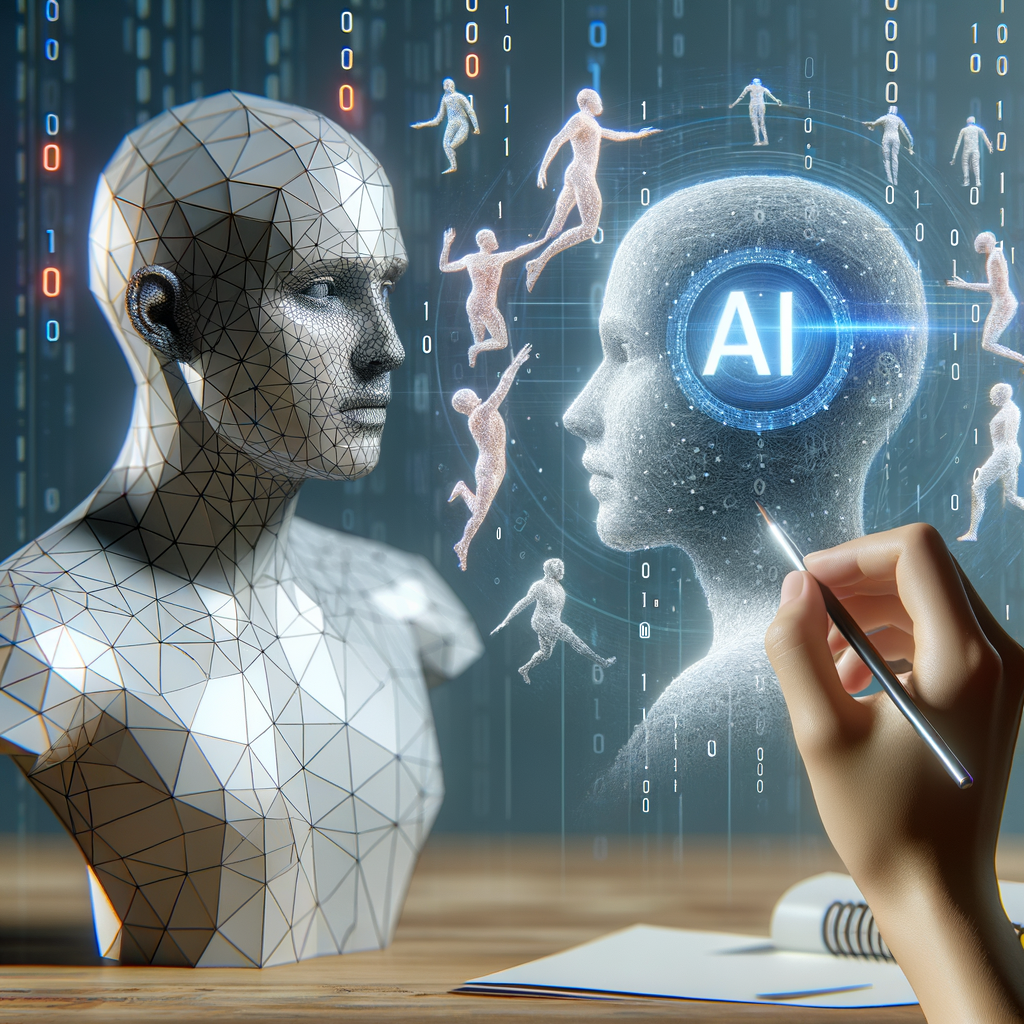
Crafting Realistic Virtual Characters: The Intersection of AI and Digital Human Modeling
In this blog post, we explore the fascinating world of creating lifelike digital humans using artificial intelligence. Discover the techniques and technologies behind crafting virtual characters that can interact realistically in various digital environments, from video games to virtual reality experiences. Learn about the latest advancements in AI that are driving this innovative field and how it reshapes industries by providing more immersive user experiences.
Crafting Realistic Virtual Characters: The Intersection of AI and Digital Human Modeling
Introduction
In today's digital age, the demand for realistic virtual characters is higher than ever. Whether in movies, video games, or virtual reality experiences, the ability to create lifelike digital humans is a testament to the advancements in artificial intelligence and computing power. This blog post delves into the technologies and methodologies that power the creation of these digital entities.
Understanding Digital Human Modeling
Digital human modeling combines computer graphics, motion capture technology, and AI to create realistic representations of human forms and motions. The goal is to create characters that can mimic human behavior, emotional expression, and physical movements convincingly.
Motion Capture Technology
Motion capture (Mocap) is crucial for recording the movements of real humans and translating them into digital formats. Technologies such as inertial sensors, optical tracking systems, and markerless Mocap are popular tools used in this process. These tools are improved by machine learning algorithms which help in refining raw data to produce more seamless animations.
AI-Driven Facial Animation
Facial animation is critical for making characters relatable and believable. This process involves capturing subtle facial expressions and emotions, a task achieved through deep learning. AI algorithms analyze vast datasets of human expressions and train models that can replicate these intricacies on digital avatars.
The Role of AI in Enhancing Realism
AI plays a fundamental role in refining the realism of virtual characters. Here are key areas where AI is utilized:
1. Speech and Dialogue Systems
AI systems are employed to create dynamic speech patterns, providing virtual characters a more human-like ability to engage in conversations. Natural language processing (NLP) and generative AI models allow these characters to understand and respond contextually and appropriately.
2. Machine Learning for Behavior Simulation
Machine learning algorithms allow characters to display autonomous behaviors and reactions. By studying data patterns from real-world human interactions, AI can simulate actions like decision-making, pathfinding, and interaction with the environment.
3. Real-Time Rendering
AI enhances real-time rendering capabilities, allowing characters to appear lifelike in different lighting and environmental conditions. Neural networks are used to optimize rendering processes to provide realistic textures and shaders efficiently.
Innovations in Virtual Reality (VR)
Virtual reality represents the frontier for digital character interaction. Within VR environments, realism and immersion are imperative, driving innovation in AI to ensure characters can interact convincingly with users.
AI-Enhanced VR Experiences
In VR, AI is leveraged to simulate environments where characters can interact based on user inputs, learn contextual preferences, and deliver highly personalized experiences.
The Ethics of Digital Human Representation
While AI enables significant strides in realism, ethical considerations are important, ensuring characters are used responsibly without infringing on privacy or catalyzing misinformation.
Future Trends and Opportunities
The future of digital human modeling lies in further AI integration, aiming to create characters indistinguishable from real humans in appearance, movement, and learning capabilities. Opportunities abound in film, gaming, virtual assistants, and beyond.
Conclusion
The intersection of AI and digital human modeling continues to evolve, promising even more realistic and interactive virtual characters in the coming years. By leveraging AI's potential, industries can create more immersive and engaging experiences for users, pushing the boundaries of digital interaction.
Join us in this exciting journey toward creating lifelike digital characters, as advancements in AI technology pave the way for a new era in virtual modeling.